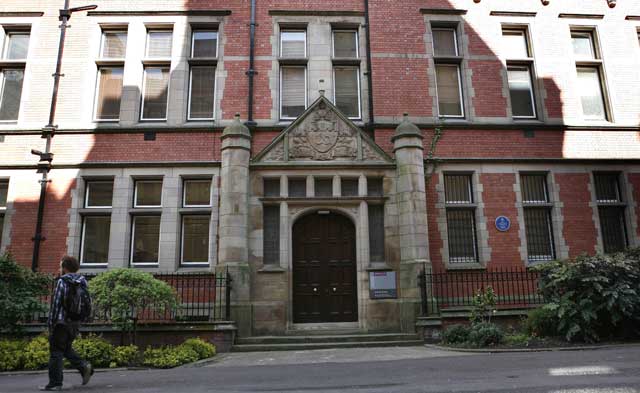Inquest to probe safety record at Manchester University
Francis Beckett reports on the case of the academics who used to work in the rooms that Rutherford used

The inquest into the deaths from cancer of two Manchester University academics who worked in rooms that were used by Ernest Rutherford, the father of modern nuclear physics, will begin later this year. The room where Rutherford worked and the one next door to it have been closed for 11 months amid concerns that they are still contaminated with mercury.
It is not yet known when they will be used again. A university spokesman said: "At no point have any levels of mercury been found in these rooms that required us to take action."
The rooms that have been closed, and those immediately below them, are known to have been contaminated with Rutherford's toxic nuclear materials. The university was concerned about radiation and mercury in these rooms long before the staff found out there might be a problem.
Staff discovered one day in 2001, when a lecturer returned to his office to find a no-entry sign and a radiation hazard warning notice. He noticed mercury on the ceiling. Radiation hotspots were marked directly below the chair he used as his desk.
Inquests are to be held on psychologists Dr Arthur Reader, who died in 2008 of pancreatic cancer at the age of 69, and Professor Tom Whiston, who also died of pancreatic cancer in 2009, aged 70. Concerns have also been expressed about the death of Dr Hugh Wagner in 2007 of pancreatic cancer aged 62, but no inquest can be held on him because Dr Wagner was cremated.
All three worked for many years in, or close to, the rooms in which Rutherford conducted his experiments before the First World War. These are the rooms which are now closed.
The Independent reported last year that a confidential university minute shows the university was taking radiation measurements in the building at least as early as 1984, and probably earlier, but records have not been kept. In 1999-2000, extensive contamination was found, and a confidential email of 24 June 2000 from Joanne Nettleton of the Health and Safety Executive (HSE), a year before staff found out the potential problem, says: "More contamination was present than expected and a larger survey was carried out." The HSE had been called in to examine the building when refurbishment work was planned, and Dr Nettleton, who led the HSE investigation, asks "why this contamination was not found until building work was planned (there was obviously a suspicion that it existed, as a survey was carried out before work commenced)."
In her report dated 30 August 2000, Dr Nettleton wrote: "The University... should have undertaken a radiation survey of the building as soon as the possibility of radioactive contamination was noted (probably back in the 1950s)."
The building continued to be used for experiments involving radioactive material long after Rutherford moved on from Manchester to Cambridge in 1908 – at least until 1947. The psychology department moved there in 1972. In the mid-1970s, a confidential university minute suggested that university security staff were reluctant to enter it, apparently concerned at the deaths of four colleagues.
The 1999-2000 decontamination was not entirely successful. Rutherford had used a good deal of mercury, and some was spilt. There were further attempts to remove it in 2005 but mercury was still present in 2009.
An enquiry under Professor David Coggon of Southampton University found in September 2009 that deaths were probably coincidental. Relations of the dead men claim that Coggon's remit was too narrow and that he made unjustifiable assumptions. Their lawyer, Liz Graham, says: "Coggon has put his faith in the idea that the amount of contamination can be measured retrospectively, even though there are very incomplete records."
The Manchester coroner, Nigel Meadows, will open the inquest when the final report is published. Unlike Coggon, he will consider the question of whether the university behaved over the years with proper concern for the safety of its employees.
Graham is attempting to block further building that would disturb the ceilings, which, she says, are "the repository for the contamination which appears to have penetrated through the floorboards of the rooms where Rutherford did some of his experiments."
Join our commenting forum
Join thought-provoking conversations, follow other Independent readers and see their replies
Comments